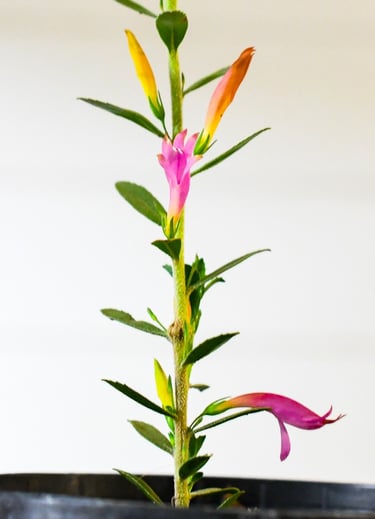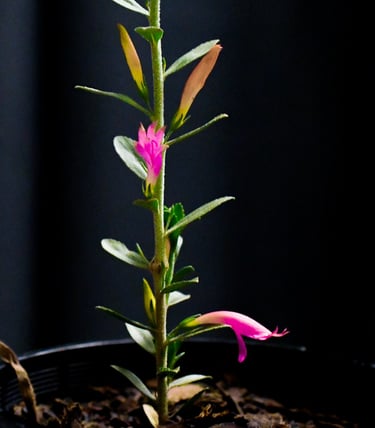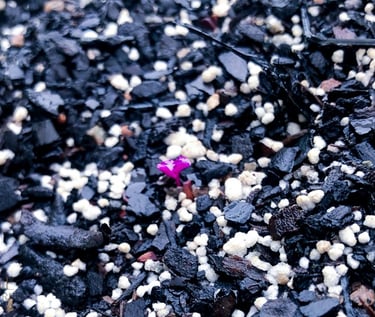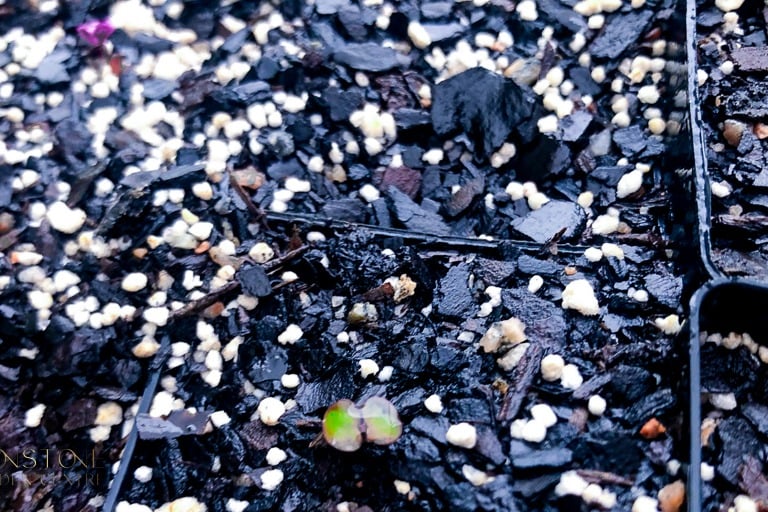The Science Behind Colourful Transformations in Plant Life


Nature paints a stunning array of colours, each pigment revealing a unique story of adaptation and function. Let's delve deeper into the fascinating world of plant pigments, using the examples of Eremophila calorhabdos flowers and Eucalyptus preissiana seedlings to understand the scientific intricacies of colour changes and their underlying reason.


The initial sunny yellow hue of E. calorhabdos flowers is attributed to carotenoid pigments. Carotenoids, such as β-carotene, absorb light energy, aid in photosynthesis, and serve as antioxidants. As the flowers mature, the synthesis of carotenoids decreases, and the emergence of anthocyanin pigments, such as cyanidin and pelargonidin derivatives, contributes to the shift towards pink tones.
Anthocyanins are water-soluble pigments responsible for plants' red, purple, and blue colours. Besides colouration, they play crucial roles in photoprotection by absorbing harmful UV radiation, attracting pollinators through visual cues, and acting as antioxidants to mitigate oxidative stress during plant development.




The deep purple in the day-old Eucalyptus preissiana seedling is due to active anthocyanin accumulation. Anthocyanins, in their acidic forms, exhibit hues ranging from red to purple. In young tissues, anthocyanins often serve as photoprotective agents, shielding delicate structures from excess light, UV radiation, and signalling environmental cues. Changes in light intensity and temperature can influence pigment synthesis and accumulation. For example, high light levels can enhance anthocyanin production, leading to more intense colours. Pigment expression can vary with plant growth stages. Young and developing tissues often show higher anthocyanin content, gradually shifting as plants mature.
The three-day-old vibrant green colouration in one Eucalyptus preissiana seedling arises from chlorophyll pigments. Chlorophyll, particularly chlorophyll a and b, is essential for photosynthesis, capturing sunlight and converting it into chemical energy. The green hue indicates active photosynthetic processes in the seedling, which is crucial for growth and energy production.
Humans can create new varieties with specific colour characteristics by selecting plants with desired pigment traits and crossbreeding them. Techniques like gene editing and transgenic approaches allow scientists to manipulate pigment-producing genes, resulting in novel colour variations or enhanced pigment expression. Manipulating factors like soil pH, nutrient levels, and light exposure in controlled environments can modulate pigment synthesis and colour intensity.
Understanding the intricate biochemical processes and genetic regulation behind plant pigment changes unveils the complex interactions shaping their vibrant colours. Plant pigments serve multifaceted roles, from photoprotection and pollinator attraction to physiological signalling, enriching our natural landscapes with their captivating hues.
